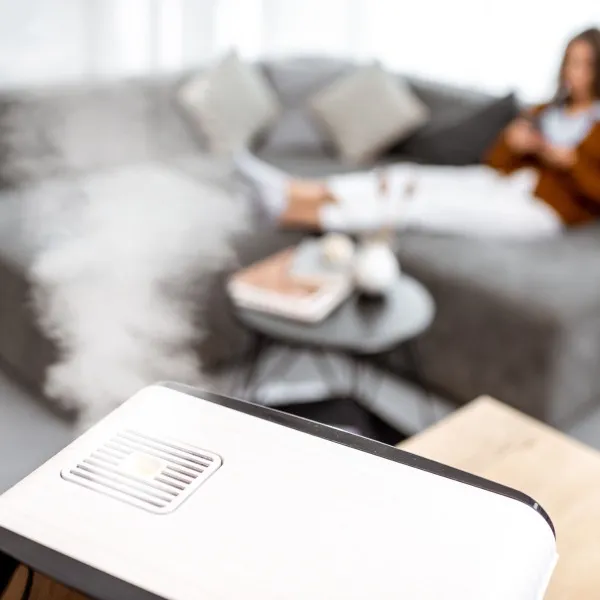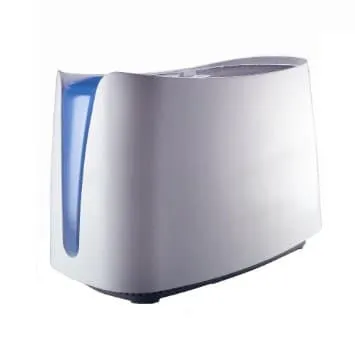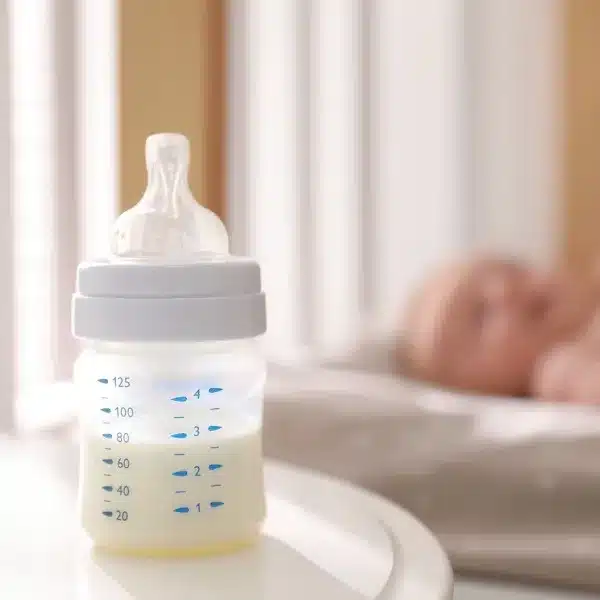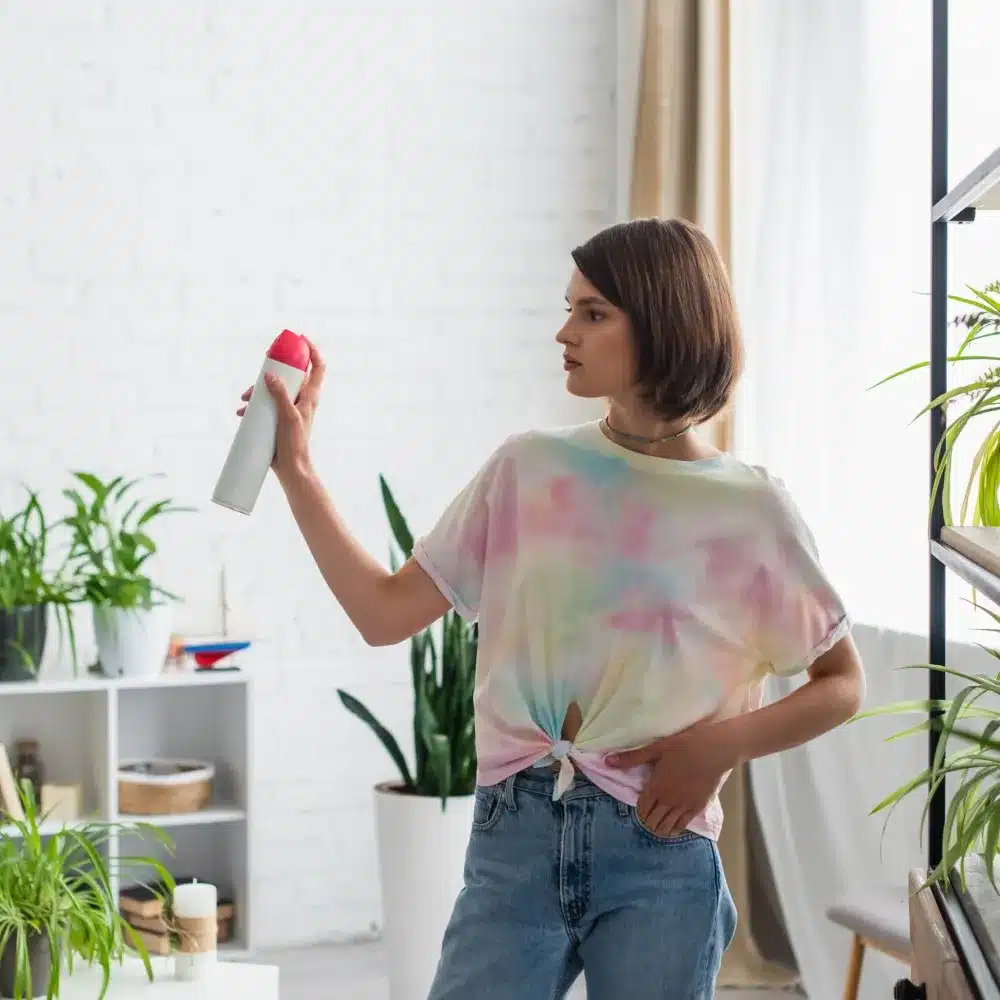Choosing a Humidifier for Winter Survival
Written by:
Maia James
03/14/2020

Updated: 09/29/2023
Looking for a different guide? Browse them all HERE.
2020 update: We wrote this post a couple of winters ago, but many of you are in search of humidifiers because of Coronavirus. I hope this makes shopping for one easier!
This time of year, I get a lot of questions about humidifiers. As temperatures drop outside, we turn up our thermostats for relief. But that warm air is dry, leaving our skin, hair and mucus membranes parched.
Add in a cold or flu, especially a sick baby, and you’ll be temped to run out and buy the first humidifier you can get your (very dry) hands on—but wait!
The humidifier market is crowded with products–cool-mist and warm-mist humidifiers; big units, small units, and whole-house humidifiers; cute humidifiers for baby; humidifiers with “air washing” and UV features; etc. When I started researching humidifiers and saw all of these options, I understood why so many readers and clients ask me for help choosing one!
You may have also heard about some of the health risks associated with humidifiers. They can over-humidify a space, which may lead to the growth of mold and bacteria in your home. If not cleaned regularly, the humidifier itself can be the perfect breeding ground for bacteria.
And warm-mist humidifiers, also knows as vaporizers, come with a burn risk because they heat water to create steam. Many pediatricians warn against using these units near children.
All that said, a good humidifier could become your best friend this winter. Here are my top tips for humidifiers–what kind to choose, and how to use it to maximize benefits and eliminate drawbacks:
Our Recommendation
Honeywell Cool Mist Humidifier
Honeywell Cool Moisture Humidifier, Medium Room, 1 Gallon Tank, White – Invisible Moisture Humidifier for Baby, Kids, Adult Bedrooms – Quiet and Easy to Clean with UV Technology for Everyday Comfort
- Choose an evaporative cool-mist humidifier. According to my research, one of the best cool-mist humidifiers is the Honeywell HCM-350. (Shoppers agree; it’s the best-selling unit on Amazon!) Warm-mist and cool-mist are the two basic types of humidifiers. Aside from the burn risk mentioned above, warm-mist humidifiers are higher maintenance and often more expensive. You should also avoid ultrasonic cool-mist humidifiers, which are more likely to over-humidify your space.
- If you’re set on the idea of warm mist, consider Stadler’s HERA Ultrasonic Humidifier, which produces both cool and warm mist. This is a good humidifier, but because it’s ultrasonic, you run the risk of over-humidifying your space. Get a hygrometer and monitor it to make sure the humidity level in your home stays in the safe range of 30-50%.
- Avoid humidifiers that require the addition of quaternary ammonium compounds, as they are linked with asthma and respiratory disorders, as well as skin allergies and irritation. For instance, Venta humidifiers require a “water treatment additive,” which contains the aforementioned compounds.
- Keep your humidifier clean! This might mean cleaning it daily or every few days. Follow the manufacturer’s recommendations. I recommend using white vinegar to clean them.
- But don’t worry about features that kill water-borne microbes or purify your air. Some units (including the Honeywell cool mist humidifier I recommend) have UV bulbs that are supposed to kill germs in tap water. Unless you’re living off the grid, your drinking water shouldn’t have these germs. Also, some humidifiers claim to have “air washing” abilities. Studies by Consumer Reports and others conclude that these claims are pretty much bogus. Don’t rely on a humidifier to purify your air. Instead, try a natural charcoal purifier, like a Moso bag.
- Last but not least, start with good water. One of the most important (and overlooked) considerations when it comes to humidifiers is the water you put into the unit. Unfiltered tap water is full of all kinds of unhealthy stuff. If you use water that contains chlorine, for instance, the humidifier vaporizes chlorine and spreads it through your home.
Stay sane,


Maia, Founder & CEO
Note: This article contains affiliate links or sponsored content, which means that if you make a purchase, we may earn a commission. We only recommend products that meet our strict standards for non-toxicity and that we use (or want to use!) ourselves. Thank you so much for supporting the brands that make Good Stuff!
Enjoying this guide?
Join 60K families who rely on our free guides on everything from milk to mattresses! Sign up to get $5 off your first order, access to our ultimate Clean Products Cheat Sheet, and ongoing exclusive access to coupon codes and promotions. Our weekly newsletter is filled with well researched tips and tricks to live a toxin-free lifestyle.
Related Posts
The Best Non Toxic Baby Bottles
Non-Toxic Air Freshener Guide
Best Prenatal Vitamin Guide
42 Ways to Have a Healthy 2024
-
Hi Maia,
Just wondering your thoughts about the filters being treated to be antimicrobial. They call it “Protec”. I’m thinking that’s not Good Stuff.
-
Hi there, I’m also wondering about the antimicrobial treatment that is used on the filters. Any thoughts on that?
-
I see numerous comments about PVC, BPA, and phthalates: I can say that I’ve tried two brand-name humidifiers so far, and both emitted a very noticeable plastic-like smell.
It would be good to see more here about the Honeywell unit recommended; the potential problem of heating up plastics to humidify a room appears to be generally overlooked.
-
The BEST solution is to not utilize your thermostat and toxic heating system in your home and acclimate to weather as best as you can and then layer and insulate yourself and home with the appropriate materials that present the lowest levels of toxicity for YOUR physiology. This is just a rant on how we overemphasize the small daily products but miss the bigger picture on the VOCs from our own home structures. I think Maia has addressed some of this before but such a large task that requires large scale changes. Again just a rant to get out my frustrations as I’m always researching and educating myself on minimizing risks 🙂
-
Do you have any concerns with the antimicrobial and mild inhibiting treatment in the wicks for this humidifier? I read somewhere in another review that the wicks were treated with quat but don’t know how to confirm
-
*mold
-
-
Also I’m sorry this isn’t super related but you’re my guru!!! Do you have any recommendations for cough medicine while pregnant? Normally I wouldn’t dream of taking anything but I am literally coughing nonstop and it’s hurting my head and stomach. My husband got me delsym (Dextromethorphan) and I’m not sure it’s okay. Please help!!! I’ve had so much Manuka Honey I can’t stand it anymore.
-
Ugh sounds awful. We do sell a great cough medicine called clear chest but it’s not to be used during pregnancy. So,sorry you could try honey lemon warm water. Or ginger tea. Best of luck!
-
Here is a link to another product that might help: https://gimmethegoodstuff.org/store/umcka-cold-flu-orange-syrup/ It does say to consult your health care provider if you are pregnant.
-
-
Hi!
I was wondering what you think of the crane penguin one? I recently got it because I had one with a filter and it got annoying. Sometimes I wonder if it does anything at all.
Thank you!!!
-
Hi Mell, The Penguine is an ultrasonic unit . They can over-humidify so keep an eye on that.
-
-
I have same concerns as DoveSong. I’d be most comfortable with a stainless steel unit to ensure no BPA, PVC, or Phthalates are a concern. Can’t find a stainless unit so looking for next best alternative to address these concerns. Any thoughts? Thank you!
-
I am wondering if the Honeywell humidifier is BPA, PVC and phthalate-free? I read that all Crane humidifiers are BPA, PVC and phthalate-free, and therefore are a good choice, especially with children.
-
To the best of my knowledge, the Honeywell is made of polypropylene, which is free of BPA, PVC, and phthalates.
-
-
I’m now looking into a humidifier that does not connect to an electrical source. What do you think about something like this? http://www.japantrendshop.com/uruoi-animal-forest-eco-natural-humidifier-p-2503.html
I don’t feel comfortable leaving a device plugged in overnight in the kids room for fire safety.






Leave a Reply
You must be logged in to post a comment.